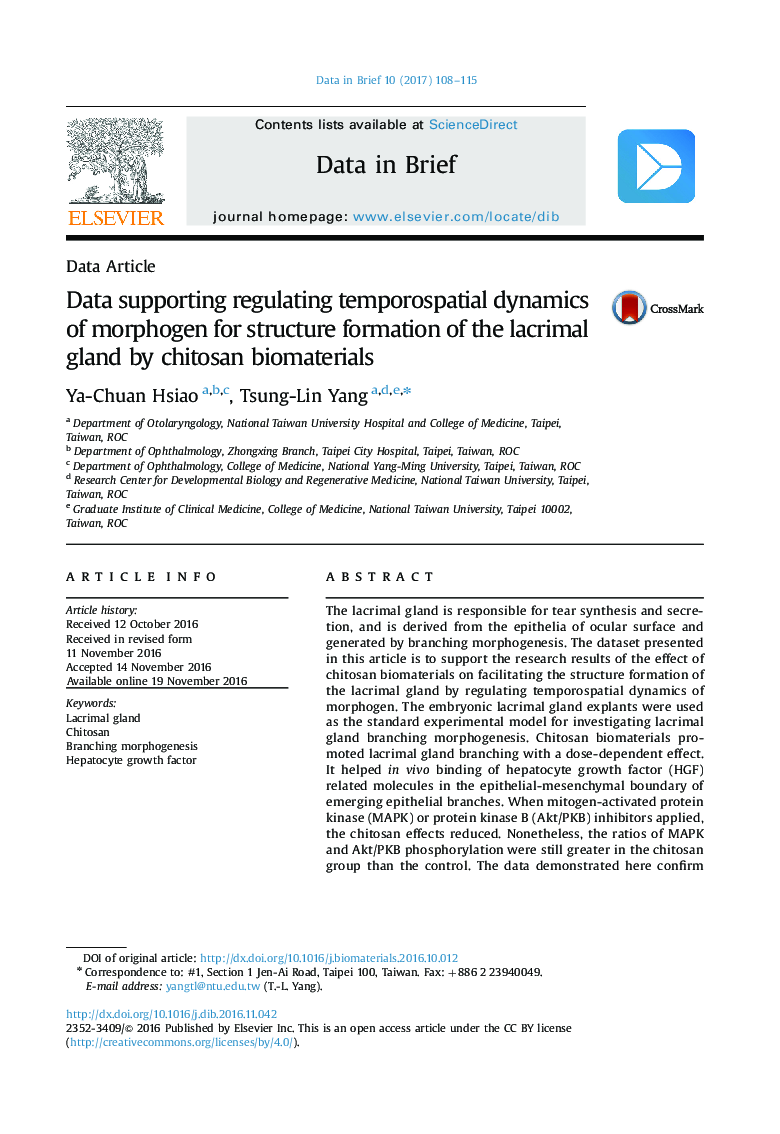| Article ID | Journal | Published Year | Pages | File Type |
|---|---|---|---|---|
| 4765281 | Data in Brief | 2017 | 8 Pages |
The lacrimal gland is responsible for tear synthesis and secretion, and is derived from the epithelia of ocular surface and generated by branching morphogenesis. The dataset presented in this article is to support the research results of the effect of chitosan biomaterials on facilitating the structure formation of the lacrimal gland by regulating temporospatial dynamics of morphogen. The embryonic lacrimal gland explants were used as the standard experimental model for investigating lacrimal gland branching morphogenesis. Chitosan biomaterials promoted lacrimal gland branching with a dose-dependent effect. It helped in vivo binding of hepatocyte growth factor (HGF) related molecules in the epithelial-mesenchymal boundary of emerging epithelial branches. When mitogen-activated protein kinase (MAPK) or protein kinase B (Akt/PKB) inhibitors applied, the chitosan effects reduced. Nonetheless, the ratios of MAPK and Akt/PKB phosphorylation were still greater in the chitosan group than the control. The data demonstrated here confirm the essential role of HGF-signaling in chitosan-promoted structure formation of the lacrimal gland.
